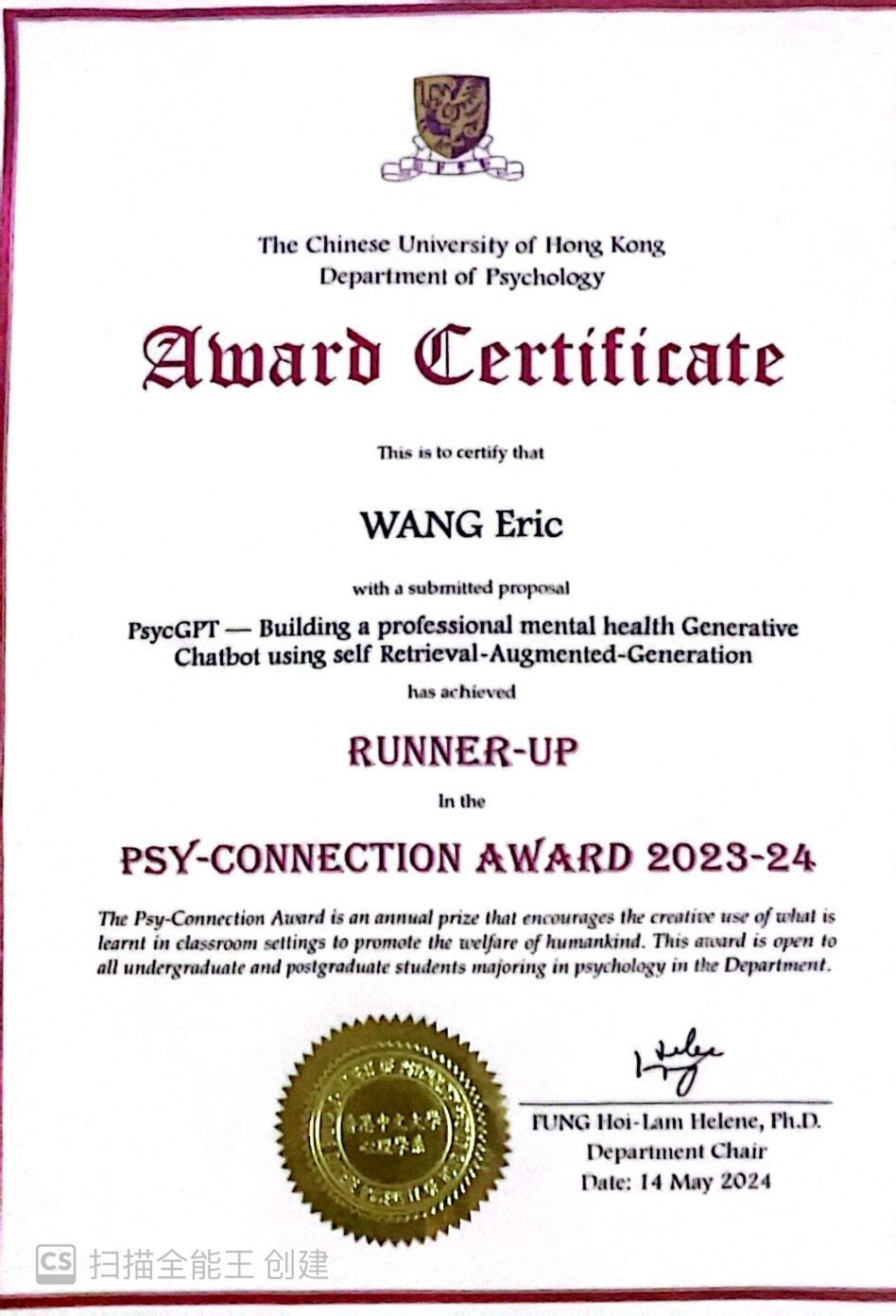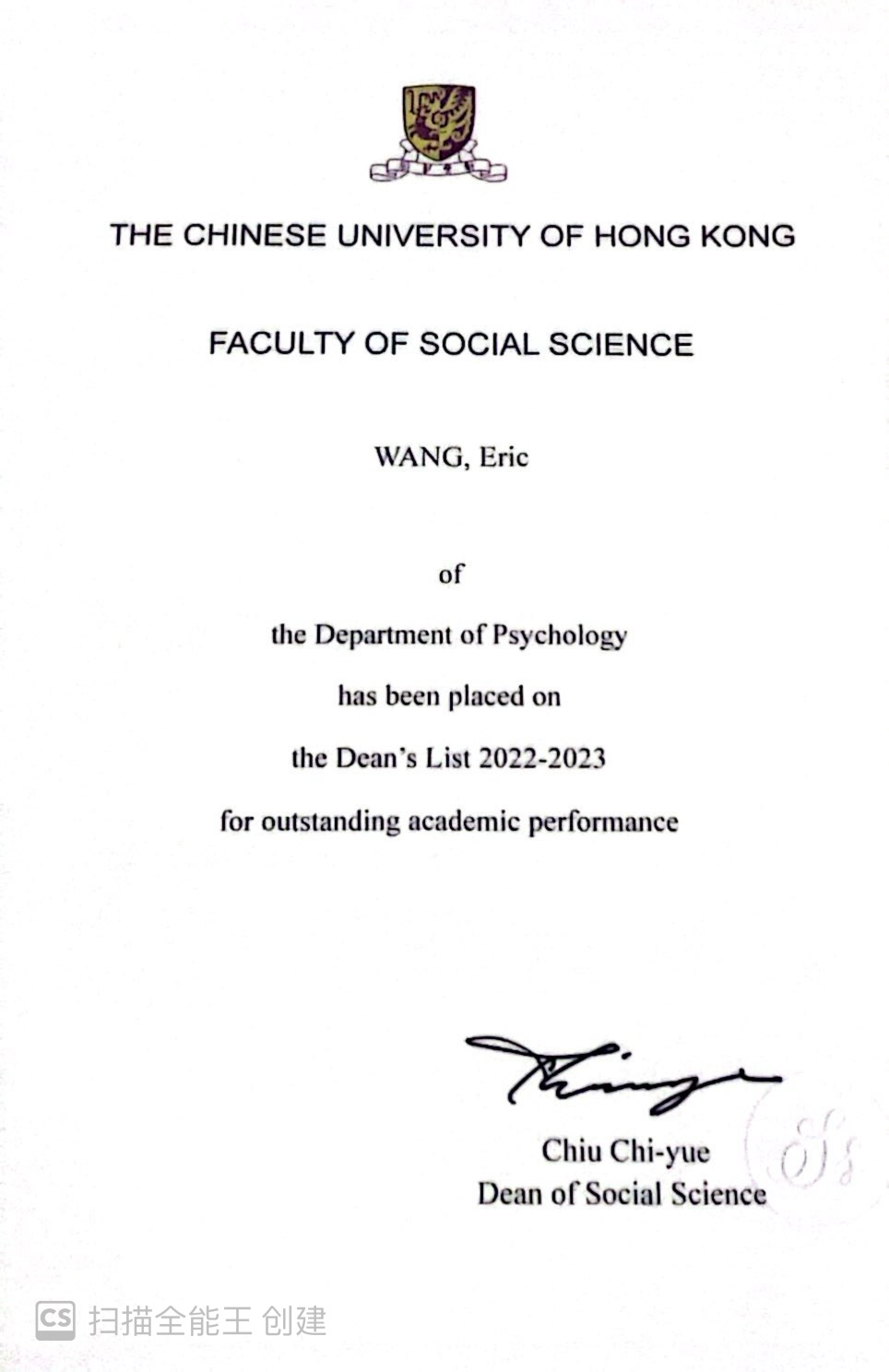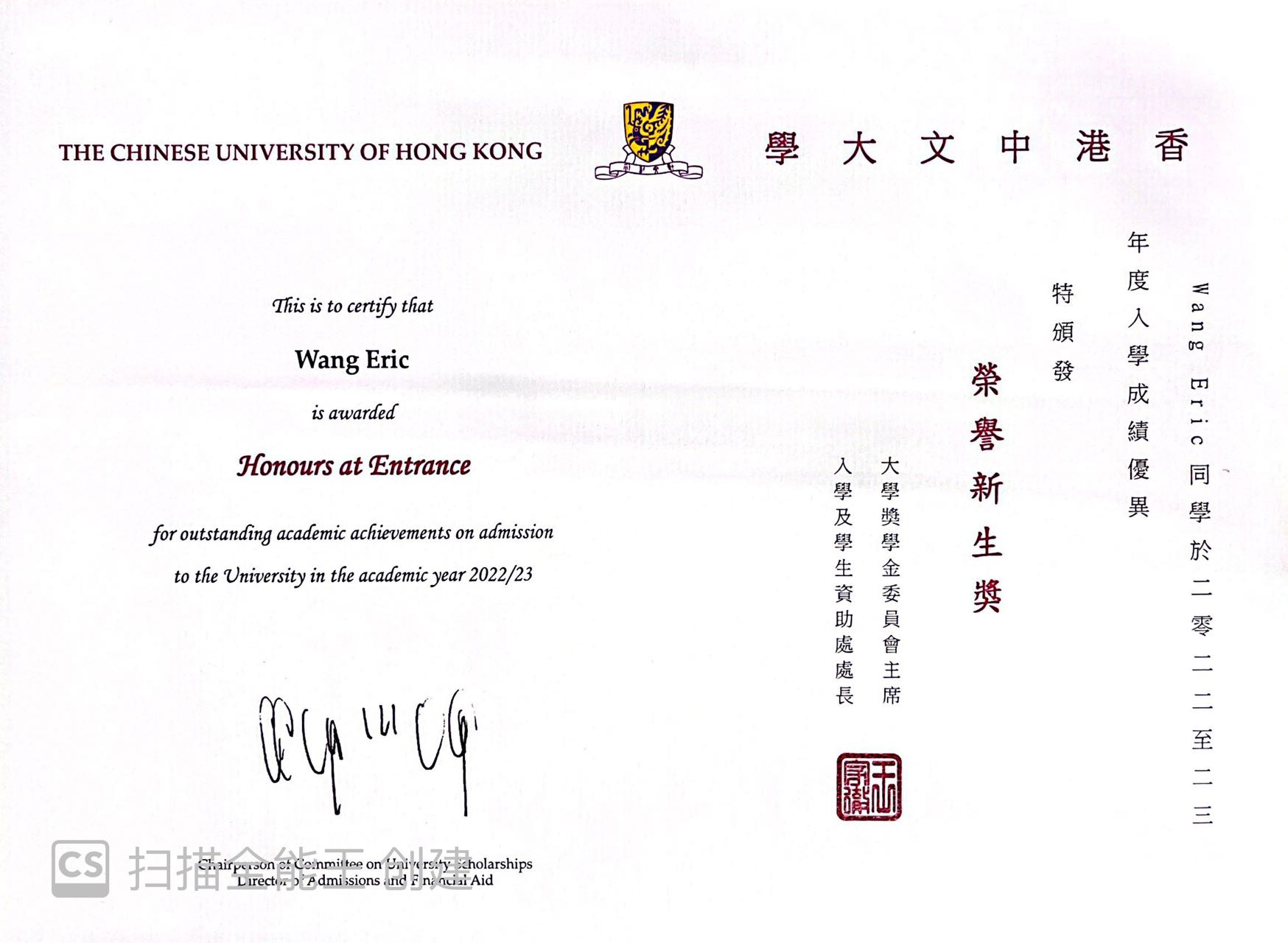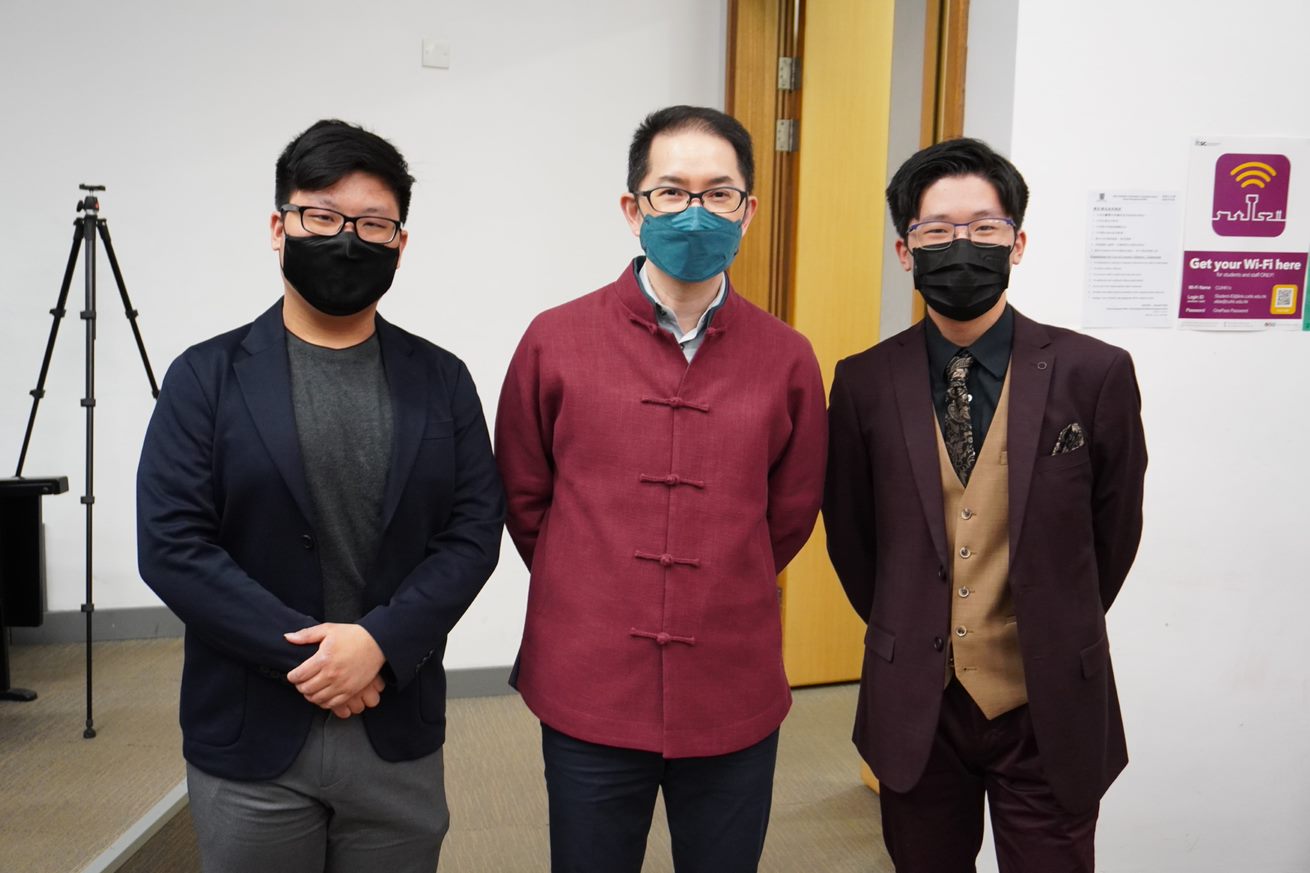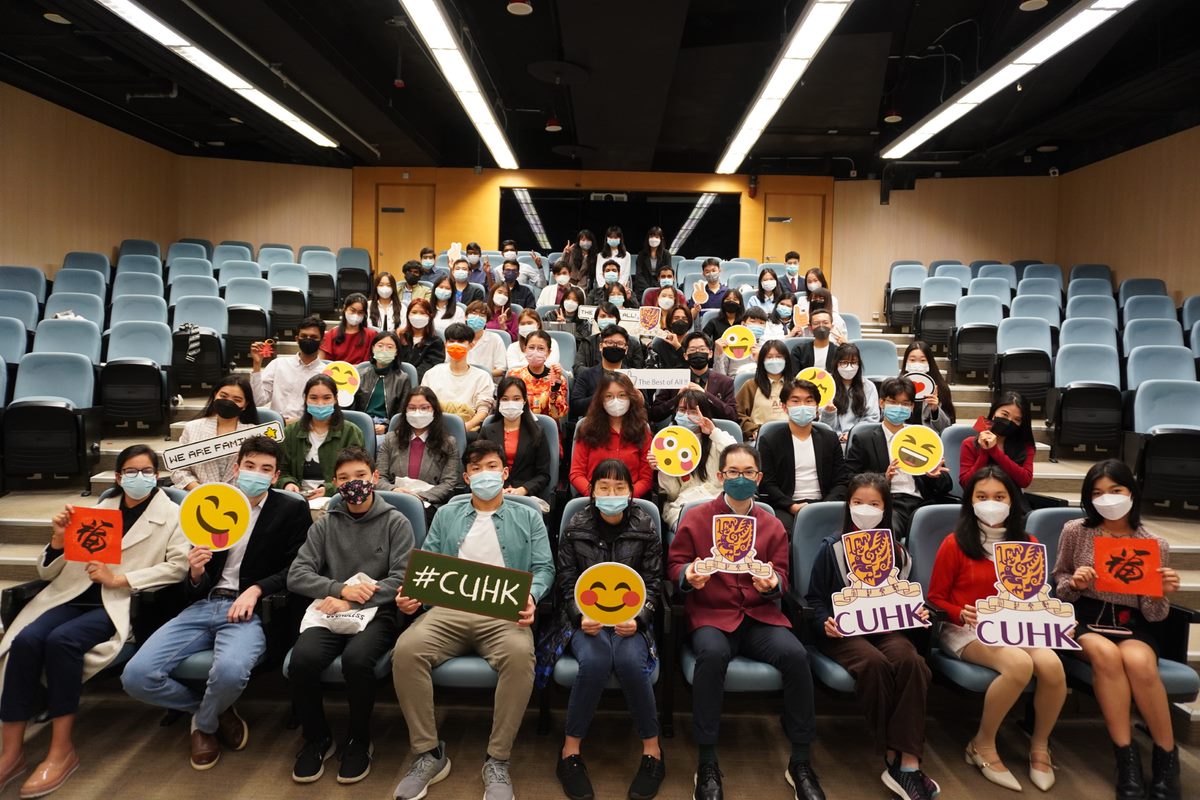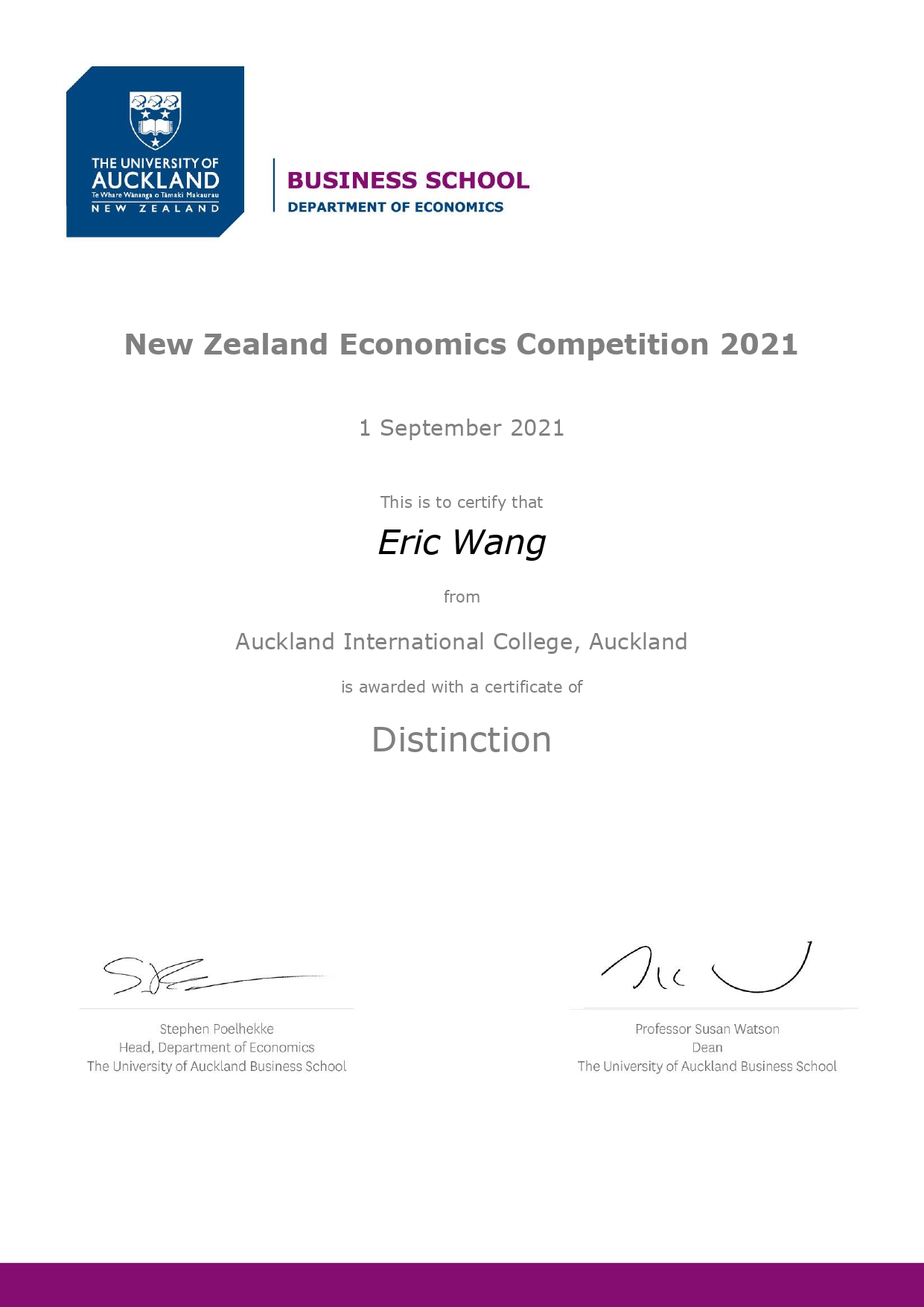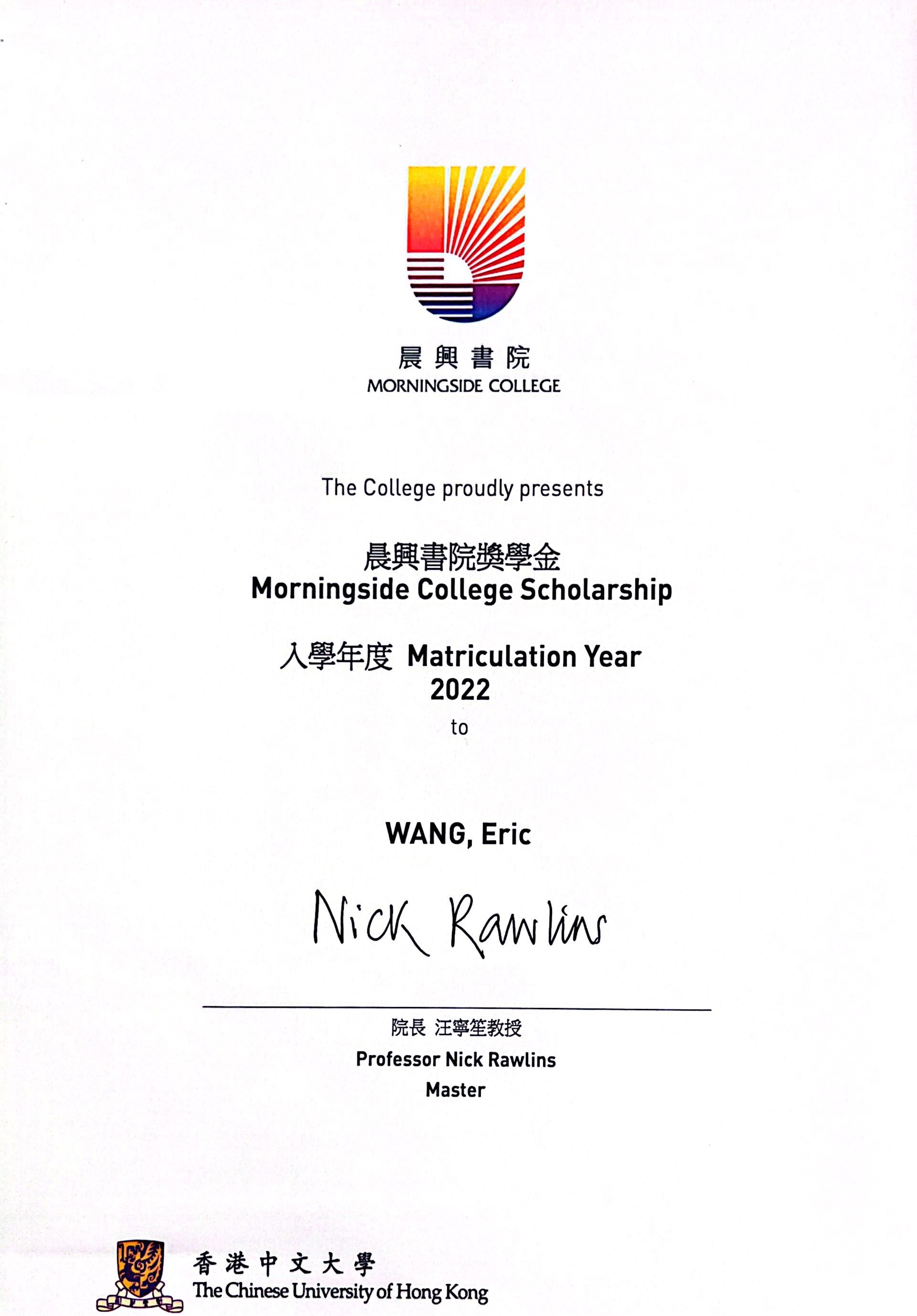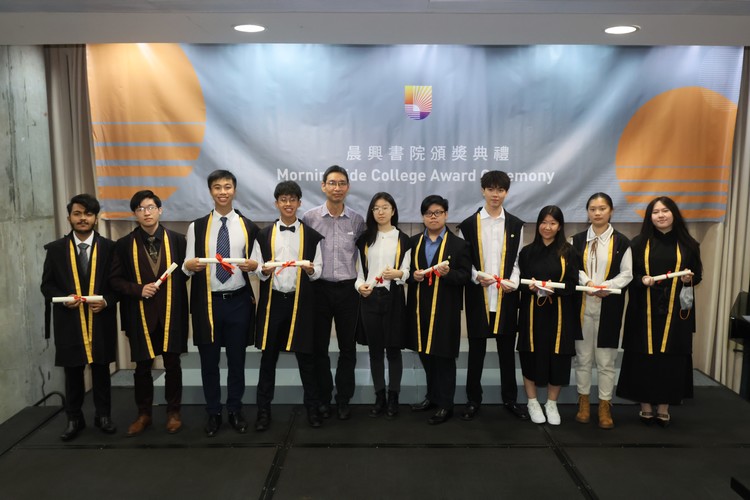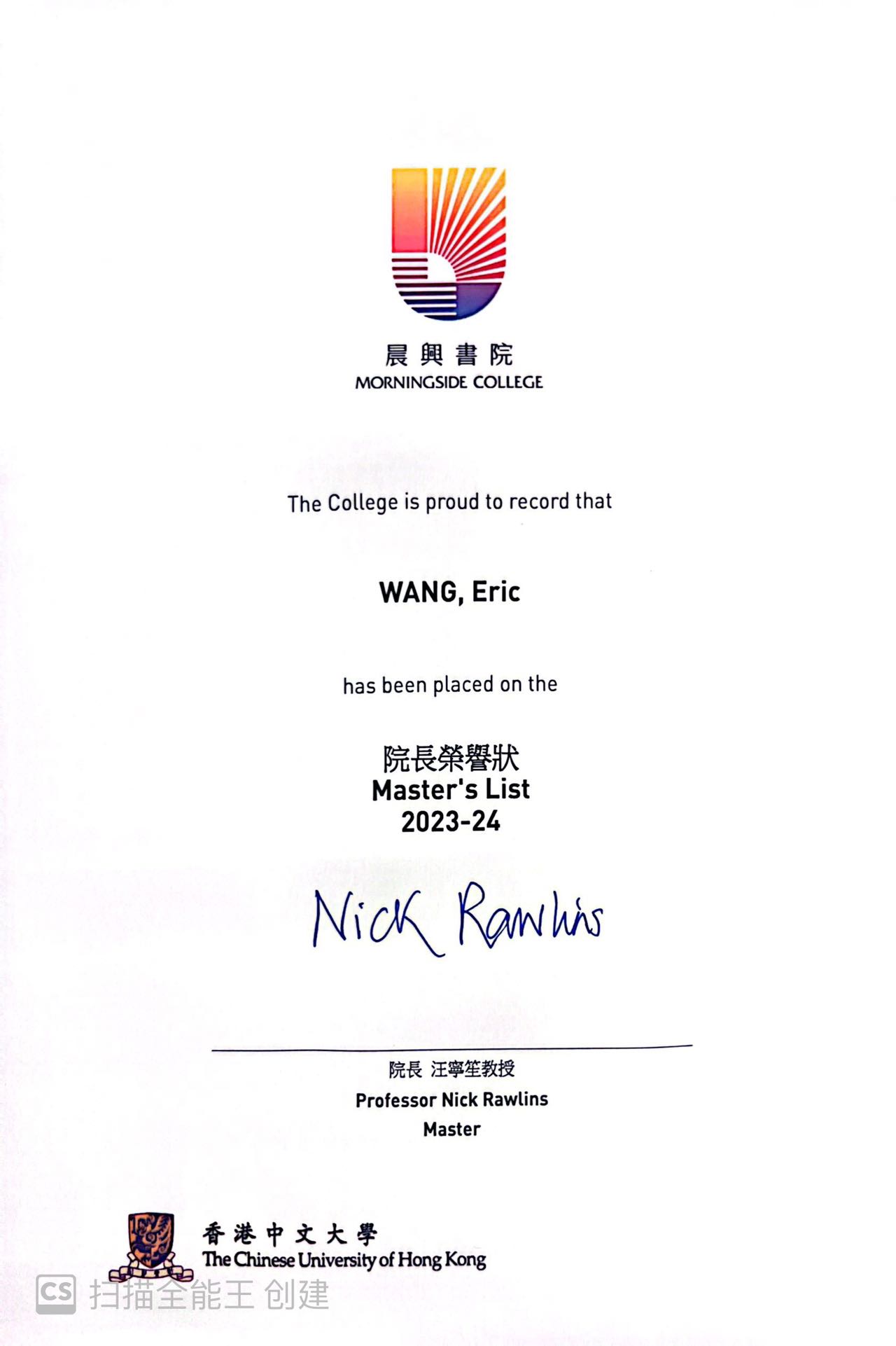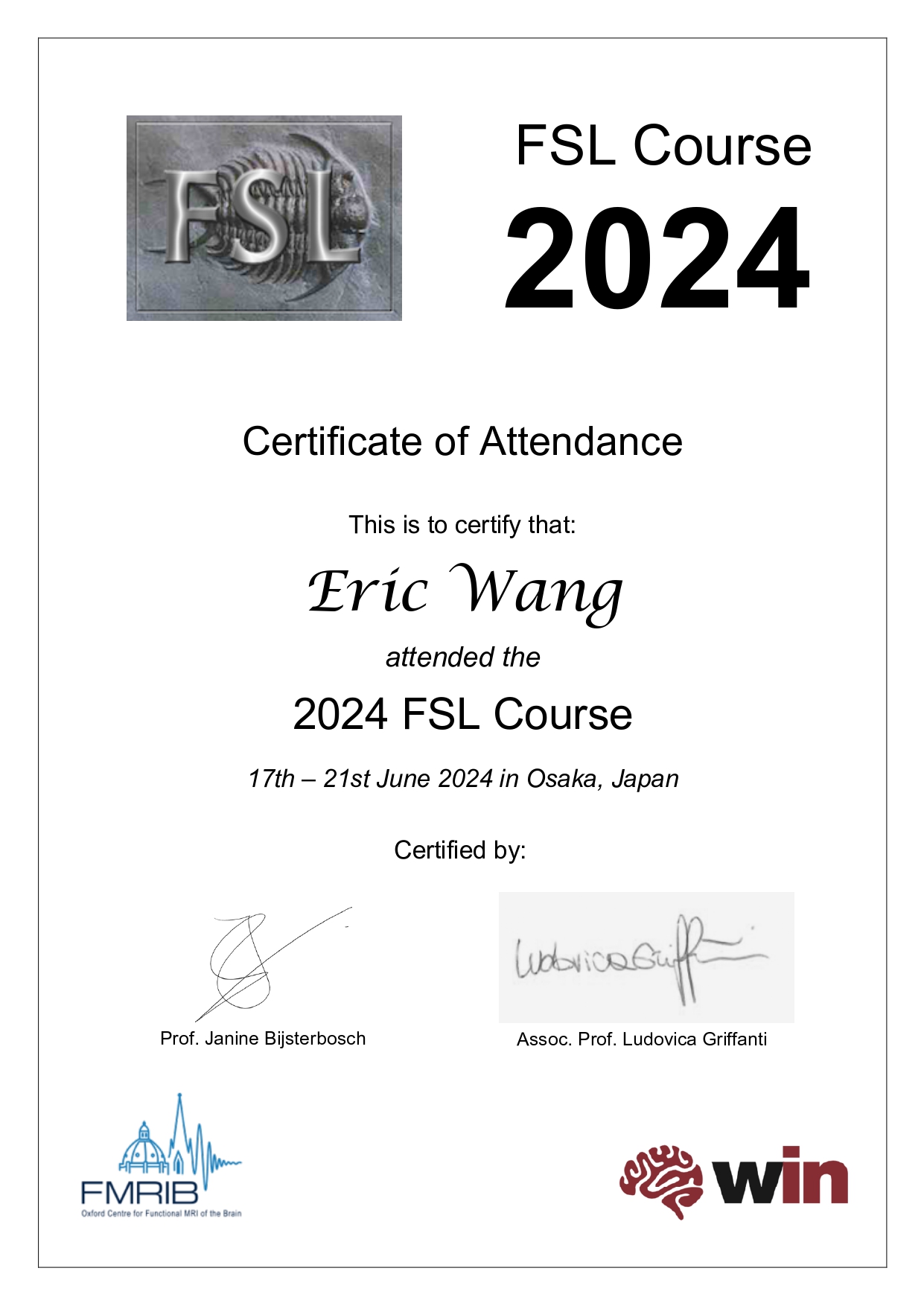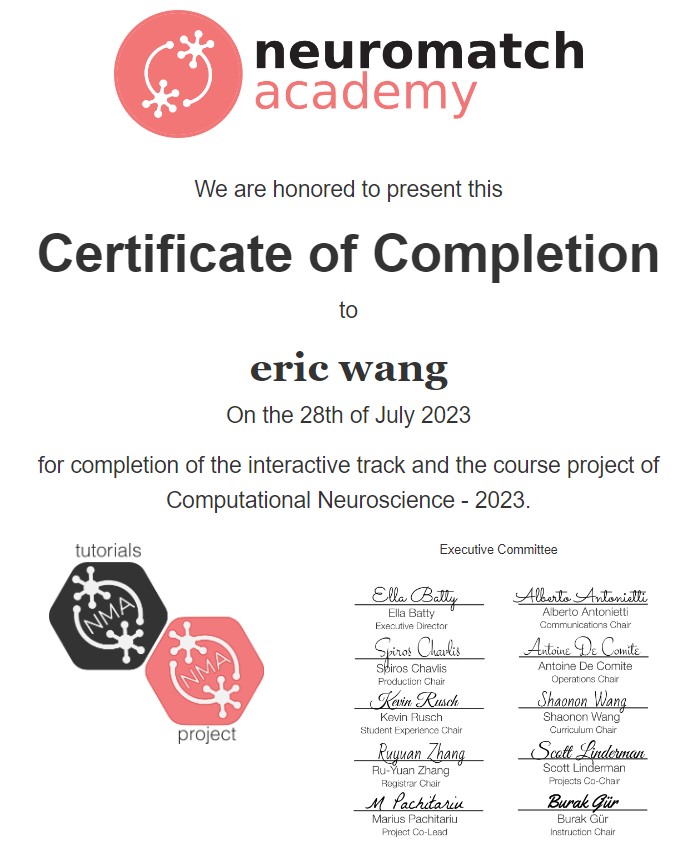About me
Hi! My name is Eric Wang. I am currently a research assistant at the CCBS, University of Macau. I obtained my undergraduate degree in Psychology at the Chinese University of Hong Kong. This is fully funded by the University and the HK Education Bureau.
In my past research, I have applied advanced computational model called the Hidden Markov Model on functional MRI (resting-state fMRI) behavioural data (eye tracking data) to examine how the resting brain state may change before and after dishonesty behaviour (Project with Prof Haiyan WU at Macau) and to examine how emotional state might influence reading comprehension through attention (Project with Prof Urs Maurer and Janet Hsiao at CUHK and HKUST).
I am actively looking for graduate study opportunities. I have an excellent academic and research record and have won several renowned awards from the university as well as the Hong Kong government, such as the "CUHK Vice-Chancellor Scholarship for Excellence", the highest undergraduate honours of CUHK, and the "Hong Kong Government Scholarship", one of the most famous scholarships in Hong Kong.
I am very passionate about neuroscience and brain science, which I think can be seen in the number of extracurricular activities I participate in and the skills I learn. However, what I can show on the website is very limited. Therefore, I would be very grateful if you could give me a chance for an informal meeting to demonstrate what I am capable of.
Approaches i take
-
Behavioral data
Behavioral data are as important as the neuron connections in the brain. Through careful analysis of the tasks and the behavior elicited by it, we can understand the underlying mechanism of brain at algorithmic level.
-
Computational models
Connectionist models and statistical models can help to develop complementary understanding and bridge the gap between human intelligence and artificial intelligence.
-
Brain imaging
One of, if not, the most powerful tool in Human Neuroscience. By recording and analysing neurological data through fMRI, we can learn how the living brain executes certain cognitive functions in real-time. With the combination of powerful computational models, there are many interesting questions we can ask.
-
Other New Technologies
In this fast-developing world, new technologies emerge. Providing new ways of doing research and investigating human cognition. Some examples like VR and AR. I also have a great interest in using those in my future research projects

